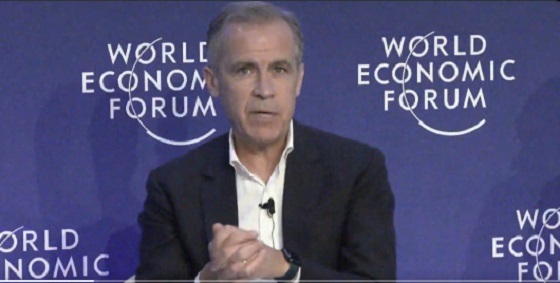International
Earth’s population will begin to shrink in a few decades. That’s bad news for everyone

From LifeSiteNews
Unless something changes, many countries will face circumstances that, until now, have only ever been observed during catastrophic plagues or savage wars.
Earth is going to hit “peak population” before the end of this century. Within 25 years, most of the world’s developed nations will be facing sharp population declines, with shrinking pools of young people working to support an ever-aging population.
The reason is not famine, war, or pestilence. We did this to ourselves, by creating a set of draconian solutions to a problem that didn’t even exist. Fear has always been the best tool for social control, and the fear of humanity was deployed by generations of “thinkers” on the control-obsessed left.
Most starkly, Paul Ehrlich made a remarkably frightening, and entirely false, prediction in 1968, in his book Population Bomb (PDF):
The battle to feed all of humanity is over. In the 1970s the world will undergo famines — hundreds of millions of people are going to starve to death in spite of any crash programs embarked upon now. At this late date nothing can prevent a substantial increase in the world death rate…
We may be able to keep famine from sweeping across India for a few more years. But India can’t possibly feed two hundred million more people by 1980. Nothing can prevent the death of tens of millions of people in India in the 1970s…
And England? If I were a gambler, I would take even money that England will not exist in the year 2000.
PJ O’Rourke explained what was going on, in his 1994 book All the Trouble in the World:
The bullying of citizens by means of dreads and fights has been going on since paleolithic times. Greenpeace fundraisers on the subject of global warming are not much different than the tribal Wizards on the subject of lunar eclipses. ‘Oh no, Night Wolf is eating the Moon Virgin. Give me silver and I will make him spit her out.’
Family planning and state intervention
But there is more going here than just gulling the gullible; the overpopulation hysteria of the 1960s and 1970s had world-changing consequences, effects that are just now becoming clear. It’s not fair (though it is fun) to blame Ehrlich; the truth is that the full-blown family-size freakout emerged from a pseudo-science that held growth was a threat to prosperity. Influential organizations were founded by very worried people. The Population Council and the International Planned Parenthood Federation were both created early on, in 1952. Developing nations began promoting aggressive family planning initiatives, often with substantial support, and sometimes with coercive pressures, from Western governments and international agencies.
The United Nations, the World Bank, and bilateral donors, particularly the United States through USAID, increasingly integrated population control into foreign aid programs. High fertility rates, particularly in Asia, Africa, and Latin America, were viewed not merely as demographic trends but as Malthusian obstacles to modernization, poverty alleviation, and global security. China implemented its infamous “One-Child Policy” in 1979 with coercive measures, including forced sterilizations and abortions. India conducted mass sterilization campaigns, particularly during the Emergency period (1975–1977), often using force or extreme social pressure, including withholding ration cards. A number of countries in East Asia saw aggressive state-controlled programs, often funded by the World Bank, that sought to use questionable and coercive methods to reduce population growth quickly and permanently.
In more than a few cases, of course, the availability of contraception was actually a means of freeing women to make a choice to have fewer children. But combining this choice with state-sponsored coercion meant that even those who wanted more children, or would have wanted more children if the social pressures had been more sensibly used, were diverted from their private dream of several children.
That would be bad enough, if that were the end of the story. But it is only the beginning, because the sanctimony of scientism has created an actual population crisis, one that will affect the world for decades. Some nations may never recover, at least not in their present form. That crisis is the population bust.
Shrinking planet: Which nations will peak when?
I did some back-of-the-envelope calculations, using available data. What I was trying to calculate was the year of projected peak population, for the 26 countries where the data are reliable enough to make an educated guess. That projection is based on Total Fertility Rates, and accounting for immigration, and mortality (life expectancy) trends. These estimates are, at best, approximations, because in some cases the data are not strictly comparable. But the data I do have are drawn from the United Nations World Population Prospects, OECD statistical reports, and national demographic data.
| Country | Total Fertility Rate | Projected Peak Population Year |
| Australia | 1.66 (2023) | 2035 |
| Austria | 1.45 (2022) | 2040 |
| Belgium | 1.60 (2022) | 2038 |
| Canada | 1.40 (2022) | 2045 |
| Chile | 1.48 (2022) | 2040 |
| Czech Republic | 1.70 (2021) | 2033 |
| Denmark | 1.55 (2022) | 2037 |
| Finland | 1.35 (2021) | 2035 |
| France | 1.84 (2021) | 2050 |
| Germany | 1.53 (2021) | 2035 |
| Greece | 1.43 (2021) | 2030 |
| Hungary | 1.55 (2021) | 2035 |
| Ireland | 1.78 (2021) | 2045 |
| Israel | 3.00 (2021) | No peak this century |
| Italy | 1.25 (2021) | 2030 |
| Japan | 1.30 (2021) | 2008 (already peaked) |
| Korea | 0.70 (2023) | 2025 (peaking) |
| Mexico | 1.73 (2021) | 2050 |
| Netherlands | 1.60 (2021) | 2040 |
| New Zealand | 1.65 (2022) | 2045 |
| Norway | 1.50 (2021) | 2040 |
| Poland | 1.39 (2021) | 2032 |
| Portugal | 1.40 (2024) | 2028 |
| Spain | 1.19 (2021) | 2028 |
| Sweden | 1.60 (2021) | 2045 |
| Turkey | 2.05 (2021) | 2050 |
| United Kingdom | 1.53 (2021) | 2040 |
| United States | 1.62 (2023) | 2045 |
| REPLACEMENT TFR | 2.08-2.11 | Constant population |
Peak population years are based on UN World Population Prospects (PDF) mid‑variant projections, supported by regional reports noting that most European/North American nations will peak in the late 2030s. Japan already peaked around 2008, South Korea around 2025, and Israel — with TFR near 3.0 — may not peak this century.
As is noted in the final row of the table, the replacement rate for total fertility is about 2.10, given trends in life expectancy and assuming no net migration.
This raises a question: if all these countries have TFRs below replacement, what is actually happening to the world’s population? The answer is simple, though it has not been talked about much. The world population is going to peak, and then start to decline. The total number of people on Earth will begin to fall sometime in the near future. The actual date of the peak is a matter of conjecture, since it depends on specific assumptions, but the estimates appear mostly to fall between 2060 (assuming current TFRs are constant) and 2080 (if TFRs increase slightly, and life span increases):

United Nations Medium-Fertility Projection (orange line)
Simplified Lancet Projection Population Scenario (yellow line)
None of this needed to happen, folks. There is plenty of room on Earth, as you know if you have ever flown across Australia, Canada, or for that matter the US, at night. There is a lot of empty space.
Let’s do a thought experiment: there are 8.1 billion people on Earth now. Suppose all of them lived in the US state of Texas (for those Texans reading this, I know it seems like we are moving in that direction; the traffic in Dallas is remarkable!). Texas has an area of 676,600 square kilometers. So supposing present trends continue, and literally the whole world did move to Texas; what would that look like?
Well, 8.1 billion / 676,600 is about 12,000 people per square kilometer. That’s slightly more dense than the five boroughs of New York (about 11,300 per square kilometer), but much less than Paris (20,000), and dramatically less than Manila (nearly 44,000). Now, New York and Paris are pretty crowded, but people do live there, and even go there voluntarily to visit sometimes. Even if the entire current global population had to move into Texas, it’d be only marginally more annoying than Manhattan at rush hour.
So, here’s the takeaway: there was no good reason for the population hysteria of past decades. As I tried to argue in an earlier piece, those predictions were ridiculous even at the time. And we need not be concerned about reviving the “population bomb,” because there is plenty of room, even if the human population does start to grow again, and even if we all had to move to Texas.
The effects of population decline are already starting to be felt in countries such as South Korea and Japan. As the average age climbs, the absolute number of people under 40 starts to decline. Unless something changes, the world population in general, and many specific countries, will face circumstances that, until now, have only ever been observed during catastrophic plagues or savage wars: blocks of empty houses, abandoned cities, and hordes of elderly people who lack the ability to provide for themselves. The difference in the present case, however, is that we are not suffering from famine or war. As Antony Davis pointed out, the current collapse of world civilization is a consequence of a striking failure to recognize that human beings are the most valuable resource we have.
Some notes on sources
- TFR data comes from OECD and UN: OECD average TFR was 1.5 in 2022
- OECD Social Indicators 2024
- The Real Reason People Aren’t Having Kids, The Atlantic
- Fertility Rate, Total for OECD Members, St. Louis Federal Reserve
- List of countries by past fertility rate Wikipedia.org
- Country‑specific TFRs drawn mostly from UN/EU data such as: Total fertility rate Wikipedia.org
- Charted: When Every Continent’s Population Will Peak This Century visualcapitalist.com
- More countries, including China, are grappling with shrinking and aging populations, The Atlantic
- Denmark’s TFR (1.55 in 2022) is from its national statistics
Korea’s extremely low TFR (0.7 in 2023) is from OECD press releases
Reprinted with permission from The Daily Economy.
Health
Canada surrenders control of future health crises to WHO with ‘pandemic agreement’: report

From LifeSiteNews
Canada’s top constitutional freedom group warned that government officials have “relinquished” control over “future health crises” by accepting the terms of the World Health Organization’s (WHO) revised International Health Regulations (IHR).
The warning came in a report released by the Justice Centre for Constitutional Freedoms (JCCF). The group said that Prime Minister Mark Carney’s acceptance earlier this year of the WHO’s globalist-minded “pandemic agreement” has “placed Canadian sovereignty on loan to an unelected international body.”
“By accepting the WHO’s revised IHR, the report explains, Canada has relinquished its own control over future health crises and instead has agreed to let the WHO determine when a ‘pandemic emergency’ exists and what Canada must do to respond to it, after which Canada must report back to the WHO,” the JCCF noted.
The report, titled Canada’s Surrender of Sovereignty: New WHO health regulations undermine Canadian democracy and Charter freedoms, was authored by Nigel Hannaford, a veteran journalist and researcher.
The WHO’s IHR amendments, which took effect on September 19, are “binding,” according to the organization.
As reported by LifeSiteNews, Canada’s government under Carney signed onto them in May.
Hannaford warned in his report that “(t)he WHO has no legal authority to impose orders on any country, nor does the WHO possess an army, police, or courts to enforce its orders or regulations.”
“Nevertheless, the WHO regards its own regulations as ‘an instrument of international law that is legally binding on 196 countries, including Canada” he wrote.
Hannaford noted that “Surrendering Canada’s sovereignty” to the IHR bodies is itself “contrary to the constitutional principle of democratic accountability, also found in the Canadian Charter of Rights and Freedoms.”
“Canada’s health policies must reflect the needs, desires, and freedoms of Canadians – not the mandates of distant bureaucrats in Geneva or global elites in Davos. A free and democratic Canada requires vigilance and action on the part of Canadians. The time to act is now” he wrote.
Among the most criticized parts of the agreement is the affirmation that “the World Health Organization is the directing and coordinating authority on international health work, including on pandemic prevention, preparedness and response.”
While the agreement claims to uphold “the principle of the sovereignty of States in addressing public health matters,” it also calls for a globally unified response in the event of a pandemic, stating plainly that “(t)he Parties shall promote a One Health approach for pandemic prevention, preparedness and response.”
Constitutional lawyer Allison Pejovic noted that “(b)y treating WHO edicts as binding, the federal government has effectively placed Canadian sovereignty on loan to an unelected international body.”
“Such directives, if enforced, would likely violate Canadians’ Charter rights and freedoms,” she added.
Hannaford said that “Canada’s health policies must be made in Canada.”
“No free and democratic nation should outsource its emergency powers to unelected bureaucrats in Geneva,” he wrote.
The report warned that new IHR regulations could mandate that signatory nations impose strict health-related policies, such as vaccine mandates or lockdowns, with no “public accountability.”
“Once the WHO declares a ‘Pandemic Emergency,’ member states are obligated to implement such emergency measures ‘without delay’ for a minimum of three months,” the JCCF said.
“Canada should instead withdraw from the revised IHR, following the example of countries like Germany, Austria, Italy, the Czech Republic, and the United States,” the JCCF continued. “The report recommends continued international cooperation without surrendering control over domestic health policies.”
Earlier this year, Conservative MP Leslyn Lewis condemned the Liberal government for accepting the WHO’s IHR.
Digital ID
Thousands protest UK government’s plans to introduce mandatory digital IDs

From LifeSiteNews
Protestors rallied in London in opposition to ‘BritCard’, which would require the personal information of all UK workers
Thousands of protestors gathered in London to voice their opposition to the UK government’s plan to introduce mandatory digital IDs.
Last Saturday, the protestors marched through central London carrying signs that read “No to Digital ID,” “If You Accept Digital ID Today, You’ve Accepted Social Credit Tomorrow,” and “Once Scanned, Never Free.”
The protests came in response to Labour Prime Minister Keir Starmer announcing the government’s plan to introduce a mandatory digital ID, called “BritCard,” for everyone who wants to work in the UK. The plan has been met with a strong backlash from the public, including protests in other cities, as reported by LifeSiteNews. Almost three million people have signed a petition opposing the government’s plan to make the “BritCard” mandatory for all workers by 2029. According to the petition, “no one should be forced to register with a state-controlled ID system,” which it describes as a “step towards mass surveillance and digital control.”
Starmer and his government used the problem of illegal immigration, for which they are at least partly responsible, as a pretext to mandate digital ID. However, critics say the real purpose of the scheme is to introduce mass surveillance of British citizens in order to control them.
The globalist NGO of the former British Prime Minister Tony Blair, the “Tony Blair Institute for Global Change,” is one of the premier proponents of the digital ID scheme.
The protest in London was led by former Tory MP Andrew Bridgen, who was expelled from the Conservative Party in 2023 over his opposition to the COVID shots.
Silkie Carlo, director of civil liberties group Big Brother Watch, told the Daily Mail that digital ID was “fast becoming a digital permit required to live our everyday lives.”
“Starmer has sold his Orwellian digital ID scheme to the public on the lie that it will only be used to stop illegal working but now the truth, buried in the small print, is becoming clear,” she continued.
“We now know that digital IDs could be the backbone of a surveillance state and used for everything from tax and pensions to banking and education.”
“The prospects of enrolling even children into this sprawling biometric system is sinister, unjustified and prompts the chilling question of just what he thinks the ID will be used for in the future.”
“No one voted for this and millions of people who have signed the petition against it are simply being ignored,” Carlo concluded.
The BritCard would be stored on smartphones and include personal details such as name, date of birth, residency status, nationality, a photograph, and potentially more sensitive personal data. The government is reportedly considering introducing digital IDs for children as young as 13.
Conservative Party leader Kemi Badenoch said the proposal was a “gimmick that will do nothing to stop the boats,” while the head of Reform UK, Nigel Farage, said he was “firmly opposed” to it.
Farage has vowed to undo any digital ID system rolled out by the Labour government if he becomes UK’s next prime minister.
“It will make no difference to illegal immigration, but it will be used to control and penalize the rest of us,” Farage said regarding the BritCard. “The state should never have this much power.”
-

 Courageous Discourse2 days ago
Courageous Discourse2 days agoNo Exit Wound – EITHER there was a very public “miracle” OR Charlie Kirk’s murder is not as it appears
-

 Business2 days ago
Business2 days agoEmission regulations harm Canadians in exchange for no environmental benefit
-

 Alberta2 days ago
Alberta2 days agoPetition threatens independent school funding in Alberta
-

 Business2 days ago
Business2 days agoQuebecers want feds to focus on illegal gun smuggling not gun confiscation
-

 National2 days ago
National2 days agoPolitically Connected Canadian Weed Sellers Push Back in B.C. Court, Seek Distance from Convicted Heroin Trafficker
-

 MAiD1 day ago
MAiD1 day agoDisabled Canadians increasingly under pressure to opt for euthanasia during routine doctor visits
-

 Business2 days ago
Business2 days agoCanada Revenue Agency found a way to hit “Worse Than Rock Bottom”
-

 Censorship Industrial Complex2 days ago
Censorship Industrial Complex2 days agoWho tries to silence free speech? Apparently who ever is in power.






